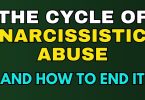Borderline personality disorder is a complex mental illness. It is also one that is highly stigmatized and stereotyped, so when you hear the term “borderline,” you may automatically think of someone who is explosive, completely out of control, highly manipulative, and generally unable to function in day-to-day life. While this may be the case for some people with borderline personality disorder, it is not an accurate depiction of BPD as a whole.
Today we talk about the four different types of borderline personality disorder. This content is for informational purposes only, so if you need help with your specific situation, please reach out to a mental health professional in your area.
So, for starters, a diagnosis of BPD is reserved for individuals who display a pervasive, long-standing pattern of instability in their personal relationships, an unstable sense of self, impulsivity, and erotic emotional states, and it has to have begun by early adulthood.
So, the Diagnostic and Statistical Manual of Mental Disorders, or the DSM, outlines nine characteristics or criteria for diagnosing BPD, of which the person needs only to have five of these criteria. But some will have a combination of 5, 6, 7, 8, or even all nine of the criteria. So, this means that there are 256 different possible combinations that a person may display, and within those symptoms, each one can be experienced in varying degrees, so can be mild, moderate, or severe. This means there is huge variability between individuals who have this diagnosis.
There have been efforts to account for all of these variances by categorizing people with BPD into subtypes. The most widely recognized and accepted types of borderline personality disorder were outlined by Theodore Millon. He categorized people suffering from BPD into four subtypes: the discouraged type, the impulsive type, the petulant type, and the self-destructive type.
So, I will give you a general description of these four types of borderline, but keep in mind that people don’t necessarily fit neatly into perfectly labeled boxes, especially those with a borderline personality disorder. So, they may fit into one category better than the other categories, but they will often have symptoms that fall into the other subcategories.
1. Discouraged type of BPD
Okay, so first, the discouraged type of BPD is also commonly known and referred to as high functioning or quiet borderline. Very often, this type of borderline is difficult to detect because they can function quite well in most areas of their lives. Their close intimate relationships are usually rocky, but generally, they are able to maintain a decent level of stability socially, at work, and with family.
This is not necessarily because they are more emotionally stable or that they have a more stable sense of self, but because they typically direct their extreme emotions inward instead of outward. So, they blame themselves instead of blaming others, and they hold a very low opinion of themselves. But their inner turmoil is extreme and highly distressing.
People with this type of borderline personality disorder have deep-rooted fears of being abandoned, and they will take extreme measures to prevent real or perceived abandonment. They are highly sensitive to anything that could be misconstrued as any type of rejection – a delayed response to a text, not checking in in the morning to say hi, a change in your facial expression, a shift in body language, a firmer tone of voice.
The discouraged borderline tends to be very loyal, and very humble. Often, discouraged borderlines put themselves in a submissive or inferior position in a relationship. They can be very clingy and emotionally needy, so their identity depends on their close relationships. As they take on the interests, hobbies, and personalities of other people in an attempt to fit in and be liked, they’re shapeshifters.
Discouraged borderlines often develop a favorite person, and they will do anything to gain that person’s love and approval and avoid rejection. And if a close relationship ends, their whole world becomes destabilized. Their extreme fear of rejection and abandonment rules their world and causes them to spiral out of control. In these types of episodes, they often take extreme measures to keep someone from leaving them.
Discouraged borderlines tend to feel depressed and powerless. They turn to others for support, although usually to the point of unhealthy dependence. Signs of a discouraged borderline tend to be that they are loyal, avoidant, hopeless, submissive, depressed, humble, helpless, vulnerable, perfectionistic, successful, lonely, and overthinkers.
2. Impulsive borderline.
The second type is the impulsive borderline, and they are often charismatic, energetic, and very engaging. They thrive on attention and often get themselves into trouble because they act first and think later. They are often superficial, flirtatious, and elusive, seeking thrills and becoming quickly bored and restless. Impulsive borderlines are often involved in a lot of drama, a lot of chaos, and they have a lack of self-control.
They typically have some histrionic and anti-social behavior and sometimes some narcissism, so they’re easily destructive, and hyperactive, and this can often get them into trouble, even legally. And because of their impulsivity, they often cause harm to themselves and others. So their emotions and behaviors are very chaotic, and they are easily agitated and irritable.
They can go from being the life of the party, charismatic, and energetic to these raging pit bulls within minutes, leaving their loved ones very confused and very conflicted. The impulsive borderline often comes from a background filled with drama and chaos, and they learn that in order to be seen and receive attention, they themselves had to be chaotic and unpredictable. And it doesn’t matter if the attention is positive or negative; they’ll take it.
They often are seductive and they develop superficial relationships that they will quickly abandon if they feel threatened or rejected. The impulsive borderline is highly anxious and on edge, and they often have substance abuse problems because that’s often a way of escaping and avoiding responsibility, reality, and the emotional distress that they’re feeling. They also engage in other self-destructive behavior, such as unprotected sex or sex with multiple partners, binge eating, overspending, drinking, illicit drugs, and gambling.
So, in a nutshell, an impulsive borderline is exciting, tantalizing, and scary. If you get into a relationship with this type of borderline, let’s just say it’s going to be a roller coaster that you are never going to forget. The signs of an impulsive borderline type tend to be that they’re superficial, chaotic, irritable, fearful, unreliable, seductive, easily annoyed, suicidal, detached, flirtatious, spontaneous, reckless, dramatic, and explosive.
3. Petulant borderline.
Number three is the petulant borderline, and the petulant borderline has a passive-aggressive personality style. They can be described as negative, demanding, impatient, and stubborn. They are pessimistic and resentful, and they often get jealous of other people’s happiness, and they hate having to depend on others.
Petulant borderlines often feel very insecure in their relationships and struggle with episodes of worthlessness, depression, guilt, and shame, while other times they can be overwhelmed with anger that causes them to lash out or attack others once the episode of rage is over, they often feel guilt, despair, and remorse, and they’re often desperate to repair the damage caused by their behavior.
A petulant borderline can swing quickly between feelings of shame and anger and use self-harming behavior as a means of coping with the distress. Having said that, the petulant borderline is the most manipulative subtype as they have a strong need to control others. They closely resemble the covert narcissist in many ways but with less grandiosity and more emotional instability, as well as more empathy.
Self-destructive BPD: So, the signs of the petulant borderline are pessimism, impatience, irritability, stubbornness, rebelliousness, cynical, resentful, easily offended, defiant, passive-aggressive, manipulative, and never ever satisfied. Number four is the self-destructive borderline. The self-destructive borderline displays masochistic personality traits. They tend to direct their feelings and emotions inward, leading to engaging in dangerous and harmful behaviors toward themselves. Bitterness and self-loathing are traits of this type of borderline. They have significant internal tension and conflict and have difficulty forming relationships with others.
4. Self-destructive BPD.
Signs of Self-destructive BPD: Self-destructive borderlines have very little sense of self, as though they are simply actors in a tragic movie.
However, they sometimes try to hide their inner conflict, and they’re often viewed by others as independent or loners. Because of their extreme behavior, it is difficult for the self-destructive borderline to create and maintain healthy relationships. This leads them to feel insignificant, bitter, resentful, and unappreciated. This often leads to increased depression and tension, which is directed inward, leading to increased self-harming and suicidal attempts.
This type of borderline engages in risky behavior such as reckless driving and aggressive behavior toward others, sometimes exhibiting some antisocial traits. They’re typically avoidant, disorganized, and usually the least successful professionally because they have poor focus and planning skills along with a tendency to self-sabotage and self-destruct.
So, the signs of a self-destructive borderline tend to be self-harm, being very self-focused, moody, depressed, self-hating, submissive, overly compliant, suicidal, and risk-seeking. There is a lot of overlap between these types of BPD, and someone may exhibit characteristics from multiple subtypes at once, and it’s also possible to shift from one type to another over time. And, as you may have noticed, some of these subtypes have some of the same symptoms.
So, you know you may find if you have a borderline personality disorder that you fit better in one category over others but that you have symptoms in all of the other categories. But the most important thing to remember is that the person with a borderline personality disorder is not behaving in these ways as part of an evil ploy to destroy your life or their own.
It’s a serious mental illness that’s very difficult to manage without treatment. It can be one of the most debilitating and damaging illnesses for the sufferer as well as their loved ones. If you have BPD, please seek treatment if you haven’t already done so. There is help and there is hope.
Also, if you are with someone who has BPD and their behaviors are psychologically or physically abusive, please reach out to a mental health professional.







Leave a Comment